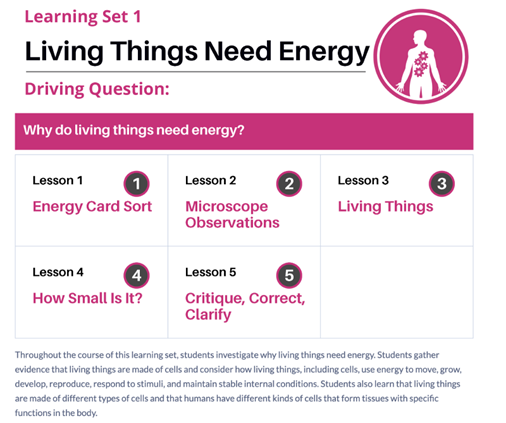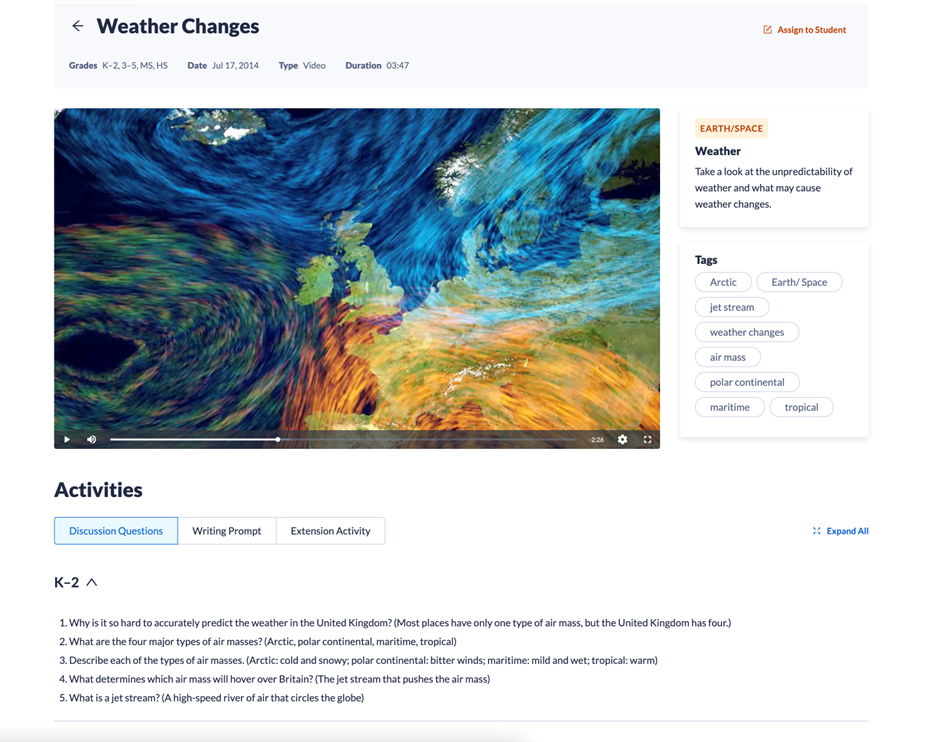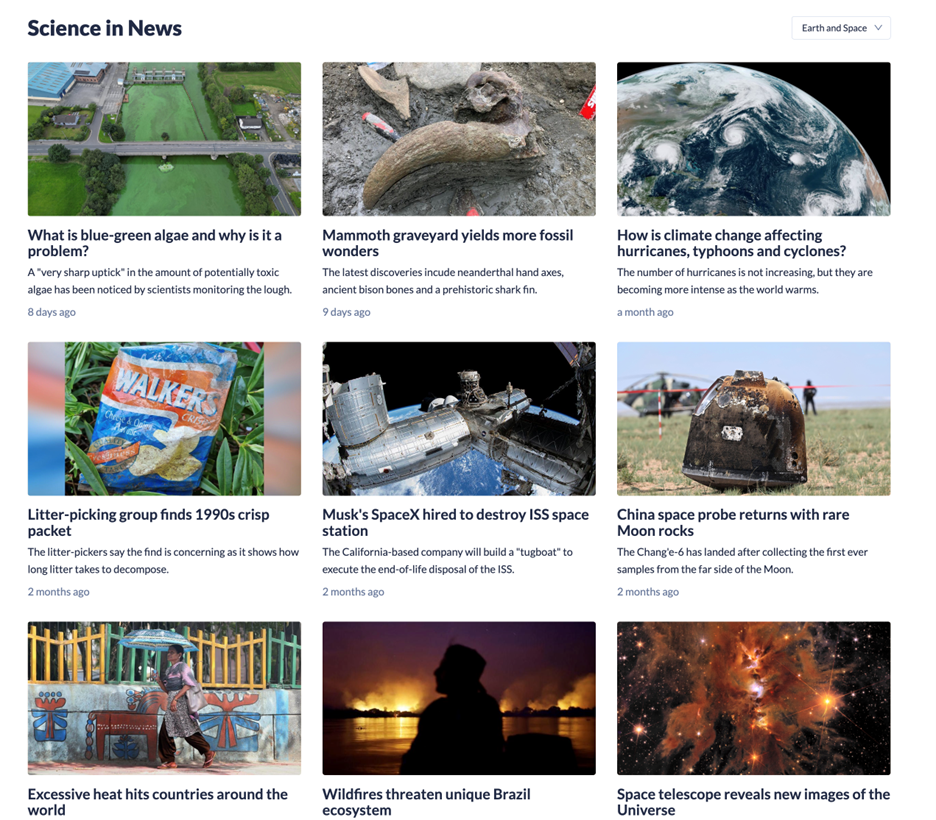Phenomena-based learning is an approach to science and STEM that uses what students see around them to drive inquiry. By focusing on things students can see, experience, or question themselves, this method fosters curiosity, critical thinking, and problem-solving skills.
It doesn’t just boost students’ understanding of scientific concepts, either. It’s a way of thinking that can touch other disciplines. It can change the way students think and feel about how they learn and boost engagement in the classroom.
Phenomena-based learning engages students in real-world concepts and helps them feel more deeply connected with the world around them.
This can set the stage for a love of life-long learning and boost student skills needed in a changing educational and professional landscape.
What are phenomena?
Phenomena are observable events or experiences. In science, these can be physical phenomena like weather patterns or chemical reactions. Phenomena are rooted in scientific inquiry and discovery. The aim is to understand the “why” behind these occurrences with study, analysis, and experimentation to better navigate our natural world.
What is phenomenon-based learning?
Phenomenon-based learning is a teaching approach that engages students through real-world phenomena. The origins of the teaching method don’t go very far. Phenomenon-based learning and its plural form, phenomena-based learning, was introduced in Finnish schools in 2014. Since then, it’s become a popular educational tool throughout Europe and science-driven school districts throughout the United States.
The Finnish model is often compared to other educational approaches with lengthier histories, like project-based learning and inquiry-based learning, as there are some commonalities. All of these approaches are student-centered. Tasks and learning goals are driven by student engagement and challenging students to investigate real-world topics. These are often hands-on, highly engaging activities that allow children to learn by doing.
Good starting points for teachers are their students' known curiosities and wonderings, such as observable natural phenomena, quirky animal adaptations, and the “why” question of the day.
Curricula like Collaborate Science can encourage students to keep asking "why" questions at all ages.

Phenomenon-Based Learning & STEM
STEM (Science, Technology, Engineering, and Mathematics) classrooms are the most obvious place to see (and introduce) phenomenon-based learning into the curriculum. The strategy encourages students to explore and investigate, answer questions, and use critical thinking skills to find solutions.
In a typical STEM classroom using this approach, students might analyze data to understand the effects of weather on their surroundings. They can design an engineering solution to an observed problem like drought, flooding, or inefficient transportation.
The teachers act as facilitators in these scenarios, guiding students through the process of problem-solving and working together to get to solutions.

Benefits of Phenomenon-Based Learning
Phenomenon-based learning is about active learning. Let’s take a closer look at the real benefits of using the approach in your classroom.
It's engaging.
Phenomena tap into student curiosities and an intrinsic motivation to learn. These are topics that resonate with them because so often they are topics students are already thinking about. This boosts engagement, enthusiasm, and a lifelong love for learning in even the most hesitant students in your classroom.
It promotes a deeper understanding of concepts.
Phenomena-based investigations develop students’ critical thinking skills. As they work through problem-solving tasks, they learn how to ask the right questions and gather evidence. They analyze, draw conclusions, and tackle real-world challenges in a more informed, evidence-based way.
It encourages collaboration.
Phenomena are more efficiently explored through group work. Students can work together to explore, analyze, and solve given problems. This develops communication skills and taps into social-emotional learning concepts like compromise and turn-taking. Students can also learn how to respect different perspectives along the way, a tool for building empathy.
It boosts teacher effectiveness.
Phenomena-based learning touches teacher effectiveness on a few different levels. Engaged learners are more successful learners that are better able to grasp and retain information. When educators move away from being lecturers to a facilitator role, even when concepts are closely mapped, students are more likely to actively participate in activities.
It's interdisciplinary.
This approach integrates multiple STEM disciplines into one cohesive learning experience, but it can also connect to content areas you may not expect. That includes literacy and the arts. Tap into students’ more creative solutions to problems or create opportunities for linked texts and stories. Phenomenon-based learning is a more holistic approach to learning.
It's equitable.
Phenomena-based learning supports access to a more engaging form of learning for all students. This approach accommodates different learning styles and doesn’t discriminate against students’ backgrounds or abilities. That’s the power of student-led inquiry. You can empower students to take ownership of their thinking regardless of their prior achievements.
It's authentic.
Phenomenon-based learning connects students to content in a real-life way. As the approach is student-driven, it fosters a sense of autonomy for students. It also introduces them to the practices of STEM professionals who engage in this level of inquiry daily. Students get real, hands-on experience in practical skills needed in both STEM and the real world.
It meets the Next Generation Science Standards (NGSS).
The NGSS and phenomenon-based learning are deeply connected. Phenomena can be the driving questions used to move through NGSS-based curriculums in your classroom, as standards are based on real-world problem-solving. This instructional strategy brings the NGSS to life for students in a more engaging way.
Examples of Phenomenon-Based Learning
Phenomena are all around us. The most powerful prompts are students’ existing wonderings and curiosities, but if you’re not sure where to start, here are a few examples:
- The teacher introduces a unit on time. Students make a list of things they’re curious about on that theme, and the classroom chooses which to pursue. Connect to holidays like Chinese New Year for more interdisciplinary opportunities.
- In a state suffering from the effects of drought, students investigate possible short- and long-term solutions for reducing water usage and conserving water. Older students can investigate whether existing conservation strategies are working.
- Where does our garbage go? What do students know about the Great Pacific Garbage Patch? Connect this one to Earth Day to bring in concepts around recycling, the reuse of materials, and what we can do to reduce our consumption.
- Take students on a nature walk. Have them note or illustrate things they see along the way. Bring those musings back into the classroom to launch concepts around animal habitats, seasons, plant life, and anything else they noticed outdoors.
- How do we interact with machines on a day-to-day basis? You don’t need to dig into artificial intelligence here (unless your students want to!) but you can start with simpler tools like levers and pulleys used in daily life.
- Have students come up with their quirkiest animal adaptations. (In Florida, local officials warn people of iguanas falling out of trees at certain temperatures! This may be a great opportunity to reach out to local experts.) Investigate why those adaptations exist.
- Plant a classroom garden. Use small potted seedlings if you have minimal space. Have students hypothesize how changes in sunlight, water, and soil nutrients affect plant growth by monitoring and measuring their seedlings.
- How does weather affect our environment? Explore the usual weather patterns with daily tracking and observe changes in temperature, precipitation, and wind strength. What do students notice about the weather changes by season, day, or even hour?
- Read a non-fiction text like Animal Sidekicks with your young learners to introduce the idea of symbiotic relationships. Have them explore their favorites in a deeper way, whether that’s through illustrations, additional research, or multimedia projects.
- Introduce students to the power of magnets. With young learners, sort objects that are magnetic from those that are not. Older students can hypothesize how we know whether something is magnetized or explore the idea of magnetic fields.
- Turn on the news to see how science shows up in the real world. Sources like STEMscopes Streaming by BBC Learning can highlight real-world phenomena for students to learn about.

Phenomena & the Future of Education
Phenomena have the potential to shape the future of education by revolutionizing the way students learn and engage. As the world becomes increasingly complex, it becomes that much more important to connect learners to real-world phenomena as a way to not only learn about that world but to help ground them.
Learning about phenomena allows educators to help their students acquire 21st-century skills like problem-solving, collaboration, and literacy in using media and information sources. Through phenomena, students can see how everything is connected, as so many of these topics support an interdisciplinary approach.
This links back to how problems are addressed in the real world, where solutions often require an understanding of multiple disciplines. Students don’t just become specialists in asking questions. They acquire the tools to help them find the information they need to answer those questions.
By embracing phenomena, educators can inspire a new generation of learners. Children of all ages are innately curious. These strategies are a way to tap into that and create opportunities for a deeper level of understanding. Phenomena help them navigate their world with creativity, resilience, and relevance while maintaining that natural curiosity for what’s around them.
The best part is that getting children to ask things like, “Why is the sky blue?” isn’t something you need to teach children. They’re already wondering these things. Phenomena get them on the path toward answering their questions in a more meaningful way and connecting with the world around them.

Resources to Support Phenomenon-Based Learning
School districts driven by STEM and science-based curriculums are likely already doing some level of phenomenon-based learning in the classroom. If you’re new to this approach, you may be interested in resources to help you embrace the power of phenomena in your classroom.
At Accelerate Learning, we understand how challenging it can be to integrate new tools into curriculums that may already feel jam-packed. Professional development and readymade materials that open up possibilities rather than feel like obstacles can help.
Collaborate Science
Collaborate Science is a hands-on K-8 curriculum that uses phenomena- and project-based learning to support a deeper understanding of science concepts. It empowers students to ask questions through inquiry-driven investigations and supports collaboration as they work with their peers to get to the bottom of driving questions.
Immersive professional development for teachers is the final piece. Collaborate Science gives educators the tools they need through a professional learning program and continued support through the implementation of the program.

Learn more about Collaborate Science.
STEMscopes Science
STEMscopes Science is a phenomena-based curriculum that uses engaging, real-world connections to support student-driven inquiry. Digital, print, and hands-on materials are based on the 5E Model of lessons where students Engage, Explore, Explain, Elaborate, and Evaluate throughout a lesson. This ensures a higher level of hands-on engagement in an activity. Students learn by doing rather than remaining passive observers.
On the teacher's side, every lesson comes with at least 25 resources to differentiate for students and engage learners no matter where they’re starting from within the curriculum. Teachers interested in full STEM certifications can do so with available on-demand training.

Learn more about STEMscopes Science.
Kide Science
Kide Science is a student-centered resource that introduces children ages 3-8 to the wonders of science through playful, story-based learning. A library of imaginative lesson plans offers engaging, hands-on activities designed to nurture curiosity and support young learners as they explore the world around them. Kide Science empowers students to foster a love of discovery while developing foundational skills.
Kide Science is meant as an additional resource for existing early childhood curriculums. For teachers interested in exploring more about the power of play-based learning in science, educator training is available as individual self-paced opportunities or remote training for teams.

Learn more about Kide Science.
STEMscopes Streaming
STEMscopes Streaming is the result of a partnership between BBC Learning and STEMscopes to offer an interactive, on-demand educational resource for STEM students of all ages. Through a rich library of engaging video content, real-world applications, and hands-on extension activities, STEMscopes Streaming offers a dynamic and immersive learning experience.
The platform is deeply rooted in tapping into 21st-century skills of collaboration, critical thinking, student-led discussion, and scientific argumentation. Most importantly, it makes STEM learning exciting and accessible for students, which boosts engagement and achievement.
Learn more about STEMscopes Streaming.
References
1. Schaffar, B. & Wolff, L. A. (2024). Phenomenon-based learning in Finland: a critical overview of its historical and philosophical roots. Cogent Education, 11, 1. https://www.tandfonline.com/doi/full/10.1080/2331186X.2024.2309733
2. Čiučiulkienė, N., Tandzegolskiene-Bielaglove, I., & Culadiene, M. (2023). Phenomenon-based learning in teaching a foreign language: experiences of Lithuanian teachers. Social Sciences, 12. 670. https://www.researchgate.net/publication/376253671_Phenomenon-Based_Learning_in_Teaching_a_Foreign_Language_Experiences_of_Lithuanian_Teachers
3. Stephenson, C.R., Bonnes, S.L., Sawatsky, A.P., et al. (2020). The relationship between learner engagement and teaching effectiveness: a novel assessment of student engagement in continuing medical education. BMC Medical Education, 20(1), 403. https://www.ncbi.nlm.nih.gov/pmc/articles/PMC7640708/
4. Najjar, E. & Daher, W. (2023). The impact of a training program based on next-generation science standards on scientific inquiry. European Journal of Investigation in Health, Psychology, and Education, 13(7), 1173-1187.https://www.ncbi.nlm.nih.gov/pmc/articles/PMC10377756/
5. Apedaile, L. (2020). Using local research as a phenomenon in the classroom. The American Biology Teacher, 82(9), 614–618. https://online.ucpress.edu/abt/article-abstract/82/9/614/114319/Using-Local-Research-as-a-Phenomenon-in-the?redirectedFrom=fulltext
6. Thornhill-Miller, B., Camarda, A., Mercier, M., et al. (2023). Creativity, critical thinking, communication, and collaboration: assessment, certification, and promotion of 21st century skills for the future of work and education. Journal of Intelligence, 11(3), 54. https://pubmed.ncbi.nlm.nih.gov/36976147/
7. Gruber, M.J. & Fandakova, Y. (2021). Curiosity in childhood and adolescence - what can we learn from the brain. Current Opinion in Behavioral Sciences, 39, 178-184. https://www.ncbi.nlm.nih.gov/pmc/articles/PMC8363506/
